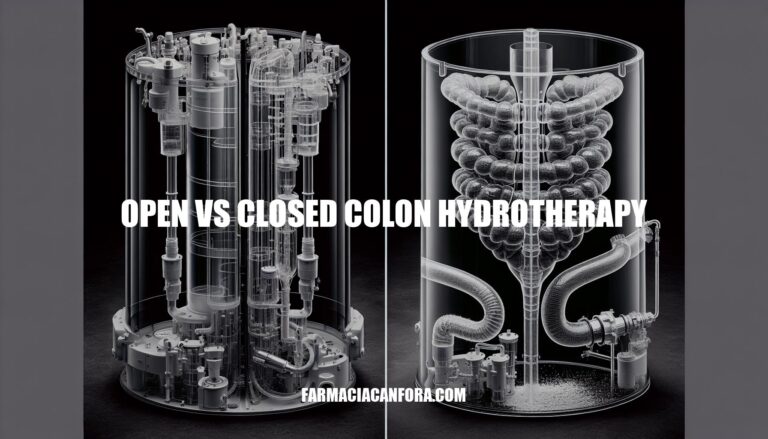


Are you considering colon hydrotherapy but unsure whether to opt for an open or closed system? Understanding the differences between these approaches is crucial in making an informed decision that aligns with your health goals and preferences. Open vs closed colon hydrotherapy is a topic that sparks much debate in the wellness community, with each method offering unique benefits and considerations.
Let’s delve deeper into the nuances of open and closed systems to help you navigate this important choice.
When it comes to colon hydrotherapy, there are two primary approaches: open and closed systems. Both methods have their own set of benefits and drawbacks, which can significantly impact the overall experience and effectiveness of the treatment.
Open systems, for instance, utilize a tube that is inserted into the rectum and allows the filtered water to flow in and out freely. This approach often provides enhanced comfort and efficiency, as it enables the therapist to more easily control the temperature, pressure, and flow rate of the water. Additionally, open systems may lead to better health outcomes in the long run, as they allow for a more thorough cleansing of the colon.
On the other hand, closed systems use a tube that is inserted into the rectum, but instead of allowing free flow, it seals off the colon and introduces the filtered water under pressure. This method can be less comfortable for some individuals and may require more frequent maintenance and replacements.
When deciding between an open or closed system, there are several factors to consider. For example, comfort is a significant aspect, as some individuals may find one approach more tolerable than the other. Effectiveness should also be taken into account, as both methods have their own strengths and weaknesses.
Another crucial consideration is the cost of each system. Open systems may come with a higher initial investment, but they can potentially offer long-term benefits that outweigh the extra expense. Closed systems, on the other hand, may be more budget-friendly upfront, but could require more frequent maintenance and replacements.
Ultimately, the choice between an open or closed system depends on a variety of factors, including personal preferences, health goals, and financial constraints. By weighing these considerations and understanding the key differences between the two approaches, individuals can make an informed decision that aligns with their colon hydrotherapy goals and needs.
In conclusion, the choice between open and closed colon hydrotherapy systems is not one size fits all. Both methods have distinct advantages and drawbacks, impacting factors such as comfort, effectiveness, and cost. Whether you prioritize comfort, efficiency, or long-term health benefits, understanding the differences between open and closed systems is essential.
By considering your personal preferences, health objectives, and financial constraints, you can confidently select the colon hydrotherapy approach that best suits your needs. Remember, whether you lean towards the controlled flow of an open system or the pressurized nature of a closed system, the ultimate goal remains the same: achieving a thorough and beneficial colon cleansing experience.